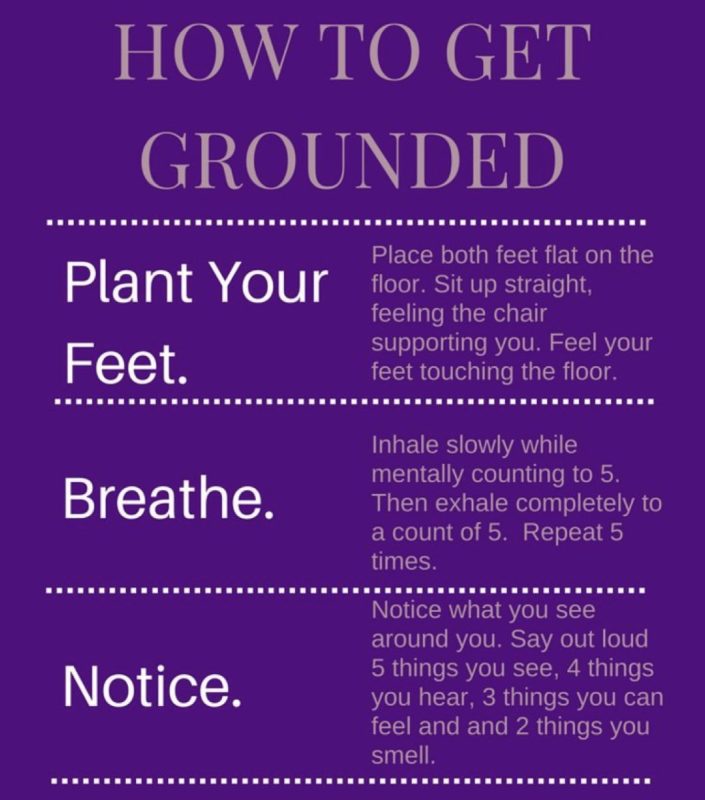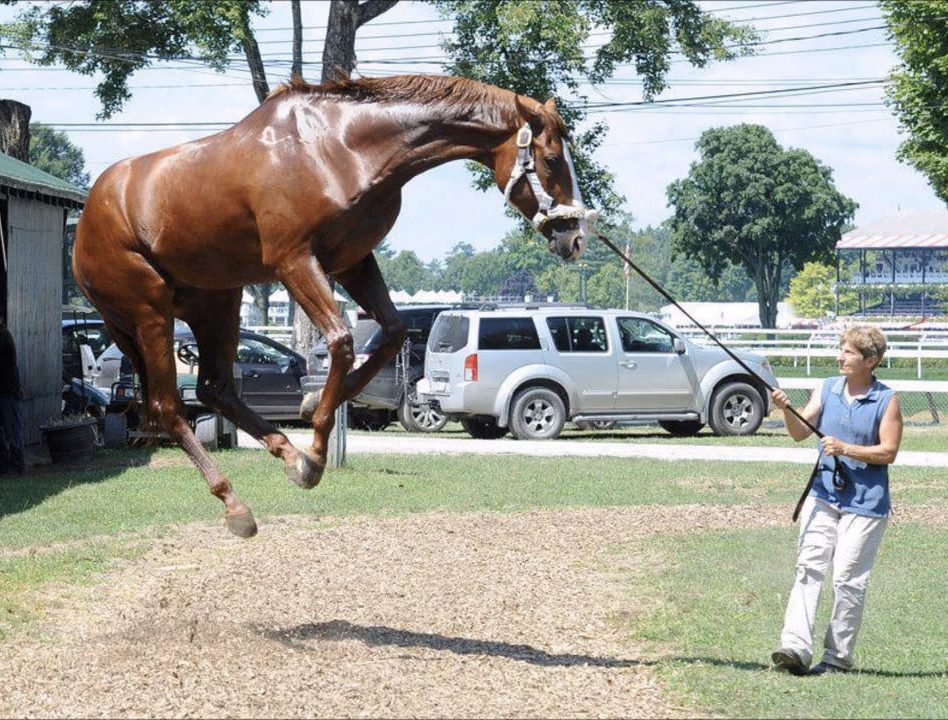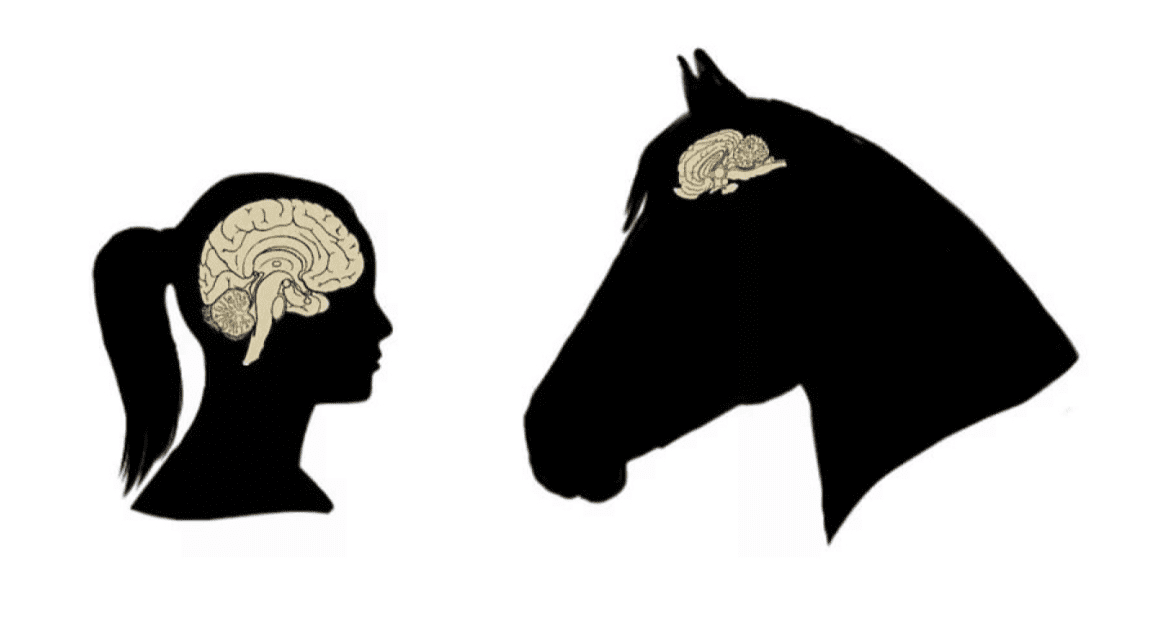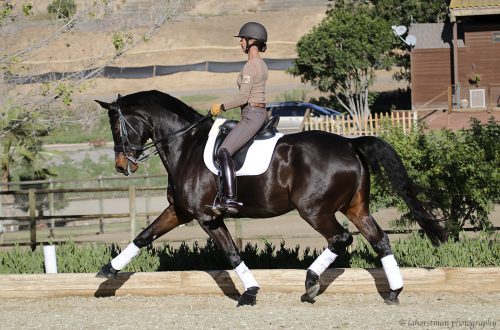
Fear, how to deal with you?
How to live in a world where you constantly feel in danger? Where even a spring puddle can make you fly up to the stratosphere. Horses have been living this way for several million years, and nothing changes over time.
The reaction of an animal to the sudden appearance of a “horse-eater” in the face of various objects most often looks comical. But with strong stimulation, fear can develop into a stampede, which is not at all safe for either the horse or the rider.
 Photo: Pinterest
Photo: Pinterest
What is fear and where does it come from?
Fear is an emotion controlled by the limbic layer of the brain. A bag flies at the horse, at the sight of it it “freezes”, the limbic brain, and specifically the amygdala, triggers the “fight-and-run” reaction, the signal is sent to the reptilian brain and the self-preservation instinct is triggered. And then you already know what happens – jumps into the sunset.
It happens that fear manifests itself without a clear stimulus. In this case, there is an opinion among horsemen that the animal does it on purpose, for evil. Why is it not?
The horse has a well-developed limbic system (the emotional part). But horses cannot think, predict and think abstractly because of an underdeveloped neocortex (cerebral cortex). It also means that higher-order feelings, such as shame, guilt or resentment, are not available to horses.

Illustration: top10a.ru
Fear is always accompanied by stress.
Stress is the body’s reaction to anything that it considers a threat in its direction. Stress happens:
- Fast is an unexpected threat
For example, a bird flew away from a tree, our favorite bag flew up under a gust of wind, or a dog jumped out from around the corner.
- Slow – anticipation
The most common example is waiting for food. Perhaps you have noticed more than once the general excitement in the stable during the distribution of lunch: someone kicks, someone runs around the stall, and someone even starts throwing themselves at the neighbors. This is the effect of slow stress.
- Eustress is the so-called positive stress.
As a result of eustress, the functional reserve of the body increases, it adapts to the stress factor and eliminates the stress itself. That is, for example, a horse’s back itched during a walk in the paddock, it lay down to lie down and the unpleasant sensations of itching disappeared.
- Distress – prolonged suffering
This may include, for example, weaning a foal from its mother or adapting to new conditions (moving to a new stable). It is because of distress that a horse can develop stereotypes such as bite or bear roll.
Therefore, in order to minimize panic reactions, we need to show the horse that he is not in danger.
window of tolerance
There is such a thing as a window of tolerance. Conventionally, this is a zone where the horse calmly adapts to any stress. The smaller the window, the more irritable the horse will be.

Illustration: Editorial Prokoni.ru
If the stimulus is “outside the window of tolerance”, the horse enters a state of either hypo-arousal or hyper-arousal.
- Hypoarousal – learned helplessness. The horse understands that its actions do not make sense, and in order not to harm itself, the psyche closes. This is a pathological condition;
- hyperexcitation – “hit-and-run” reaction.
In order to prevent getting into these zones, you need to constantly expand the window of tolerance, that is, “acquaint” the horse with your own fears. The size of the tolerance window will be affected by the number of stimuli, the history of human-horse interaction, and the satisfaction of basic needs.
Methods for dealing with fear
All methods of dealing with fear have one foundation – relaxation. When training a shy horse, the main thing is to replace fear with self-confidence. This can be done by arousing curiosity in the horse.
For example, an animal is terribly afraid to approach any bright barrier. If you start trying to force the horse to him, most likely it will either lock up or run away. But if you think up a little trick and put a treat on the barrier (create motivation), the horse will be the most curious to approach the barrier.
It is also worth paying attention to the desensitization method – reducing sensitivity to pressure on the limbs and head, as well as to objects, sounds, physical activity, etc. That is, you gradually add an irritant, for example, a spray, to the horse’s life. You puff at a certain distance and watch the reaction, gradually achieving complete addiction, calmness and relaxation. In no case do not try to immediately increase the stimulus to the maximum. Be patient.
During riding work, bending exercises (sideways, volts, serpentines, etc.), transitions, and also cavaletti can help to calm and relax the horse.
When dealing with fear, a lot depends on the person himself. It is very important to remain calm, not to get angry at the horse and not to punish him for fear. Remember that the first reaction to anything new is fear, and that’s okay.
Punishing a horse for being afraid will only make it stronger, as we show the horse that it was really scary.
Working with fears is a large complex of ways and methods that are most often individual for each specific horse. But they are united by one thing – an attentive and conscious attitude towards the animal. Thanks to this, you will definitely be able to get rid of all the “horse-eaters” who strive to scare your horse.
The article was prepared on the basis of materials from an equine behavior consultant Irina Zorina
- opium21st 21th of June 2022
The article is very well written! Answer
 Klyukvich July 6 2022 city
Klyukvich July 6 2022 cityThank you! Answer





